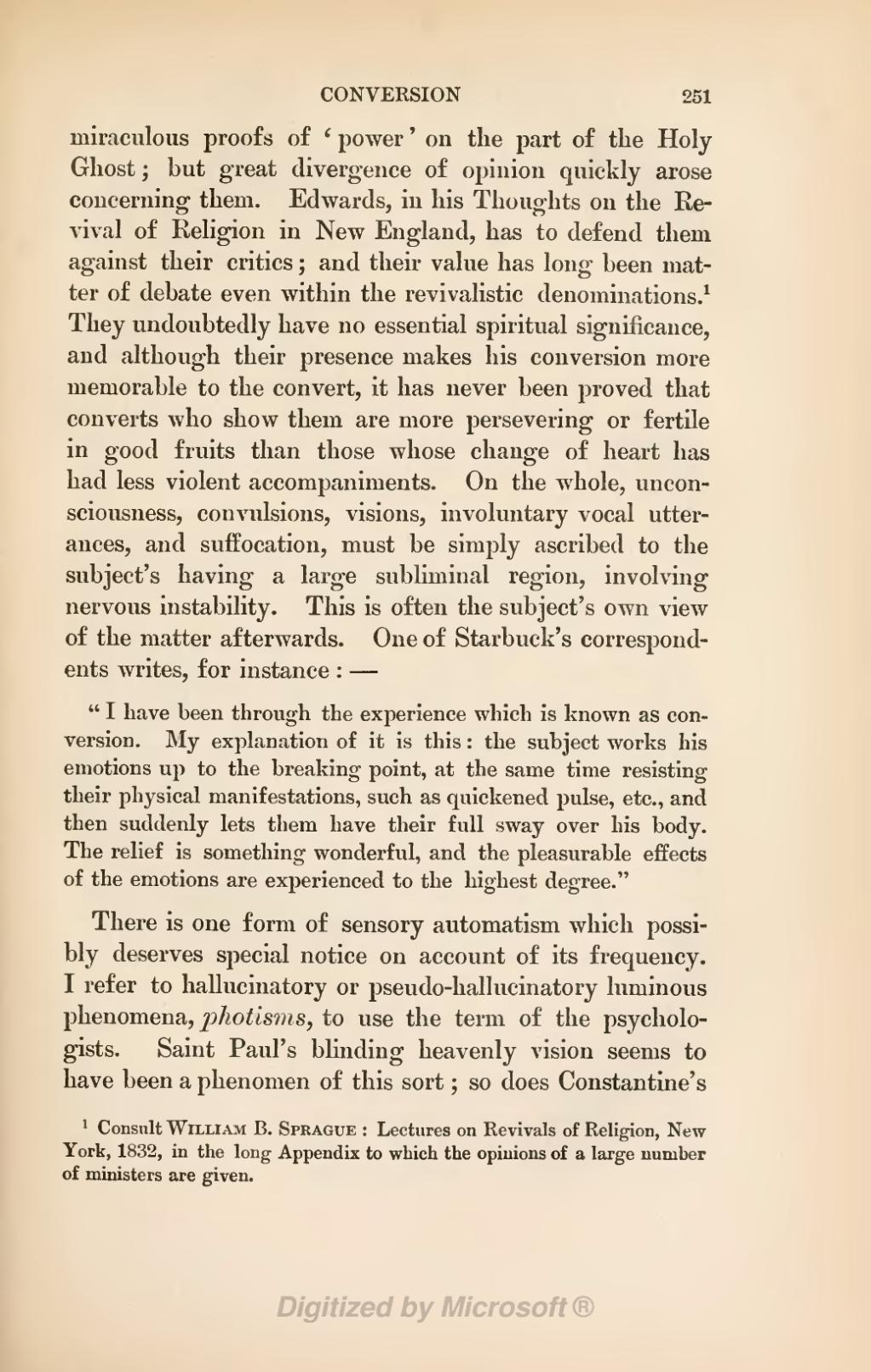miraculous proofs of 'power' on the part of the Holy Ghost; but great divergence of opinion quickly arose concerning them. Edwards, in his Thoughts on the Revival of Religion in New England, has to defend them against their critics; and their value has long been matter of debate even within the revivalistic denominations.[1] They undoubtedly have no essential spiritual significance, and although their presence makes his conversion more memorable to the convert, it has never been proved that converts who show them are more persevering or fertile in good fruits than those whose change of heart has had less violent accompaniments. On the whole, unconsciousness, convulsions, visions, involuntary vocal utterances, and suffocation, must be simply ascribed to the subject's having a large subliminal region, involving nervous instability. This is often the subject's own view of the matter afterwards. One of Starbuck's correspondents writes, for instance:—
"I have been through the experience which is known as conversion. My explanation of it is this: the subject works his emotions up to the breaking point, at the same time resisting their physical manifestations, such as quickened pulse, etc., and then suddenly lets them have their full sway over his body. The relief is something wonderful, and the pleasurable effects of the emotions are experienced to the highest degree."
There is one form of sensory automatism which possibly deserves special notice on account of its frequency. I refer to hallucinatory or pseudo-hallucinatory luminous phenomena, photisms, to use the term of the psychologists. Saint Paul's blinding heavenly vision seems to have been a phenomen of this sort; so does Constantine's
- ↑ Consult William B. Sprague: Lectures on Revivals of Religion, New York, 1832, in the long Appendix to which the opinions of a large number of ministers are given.
